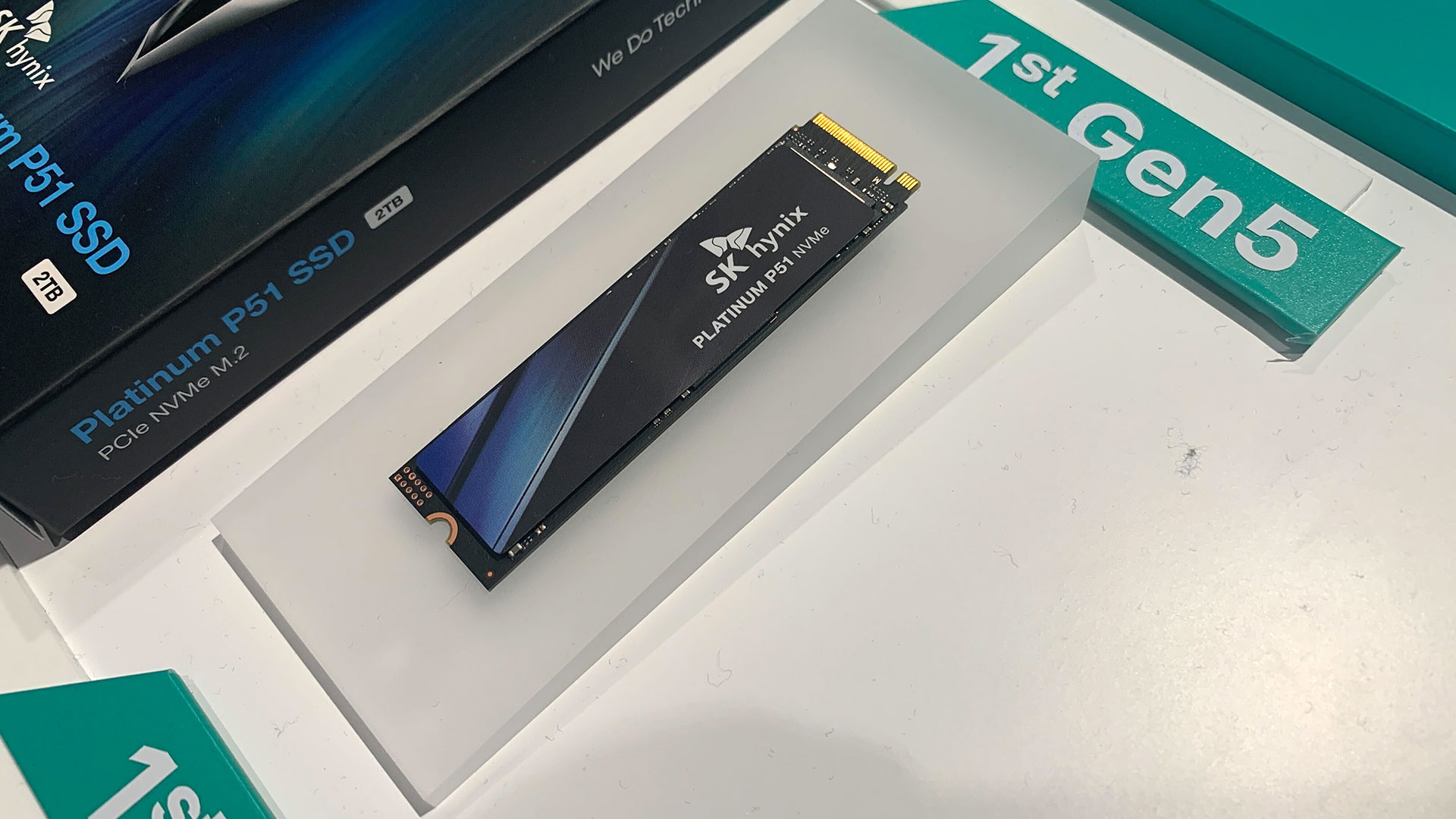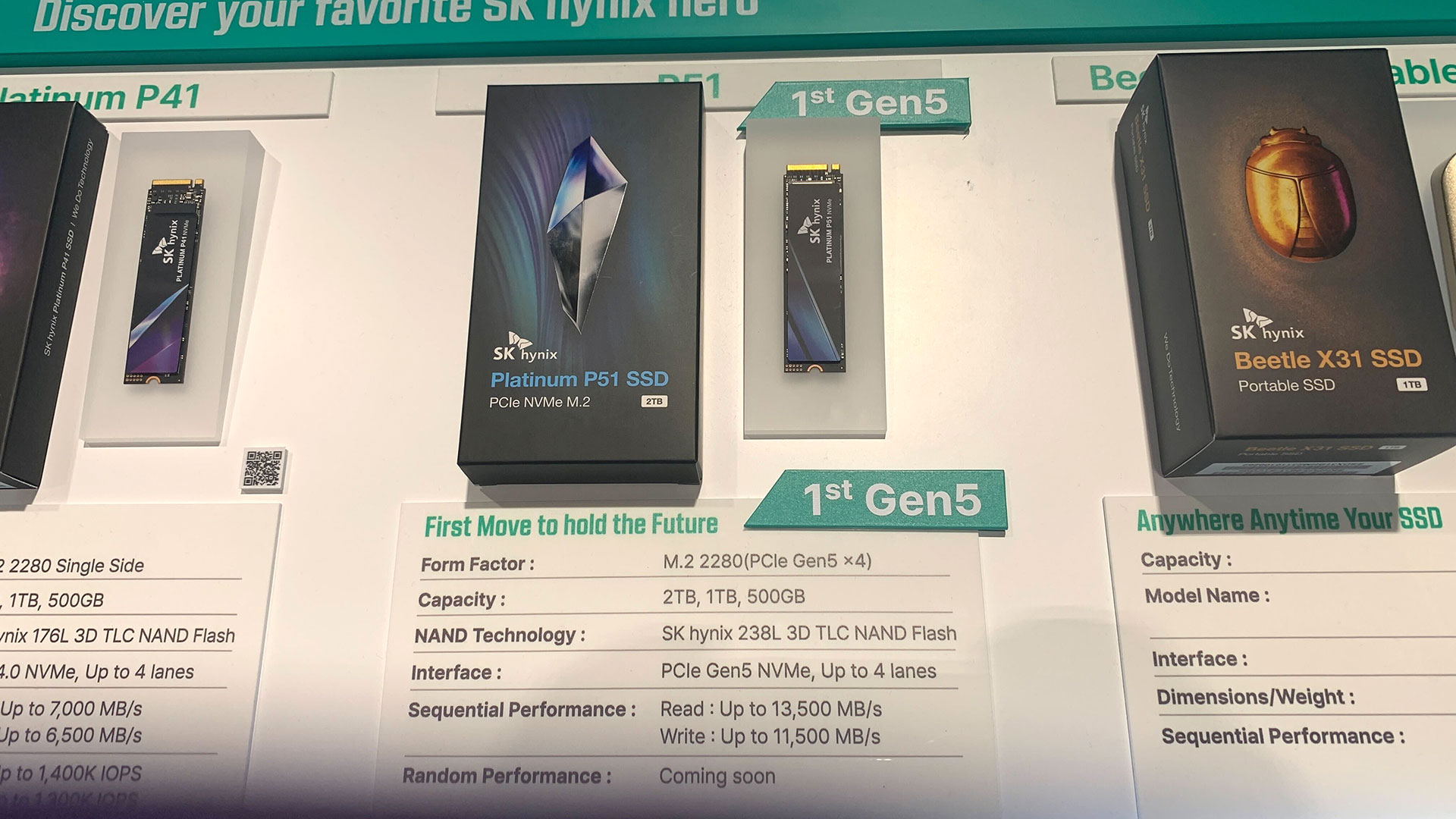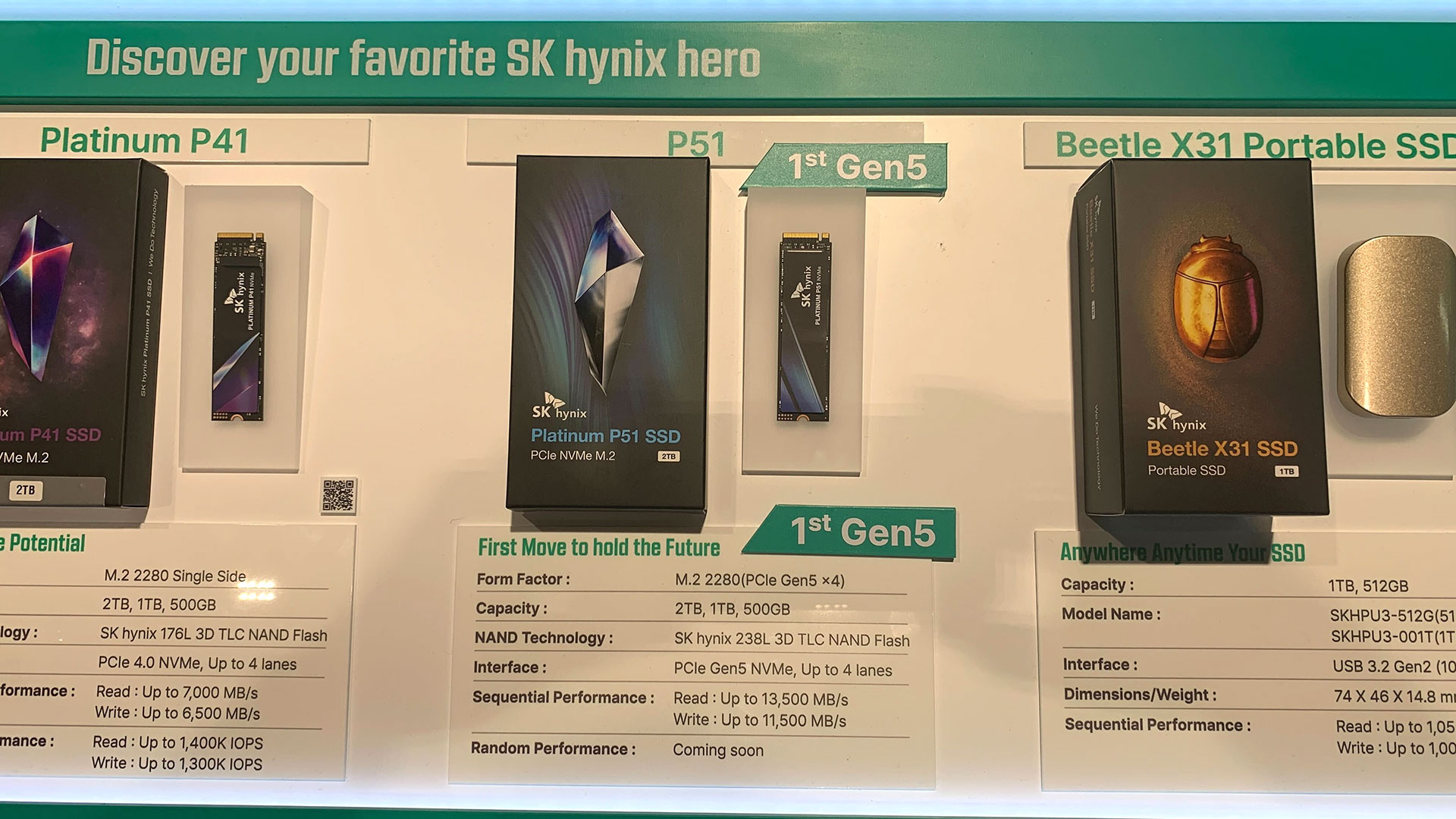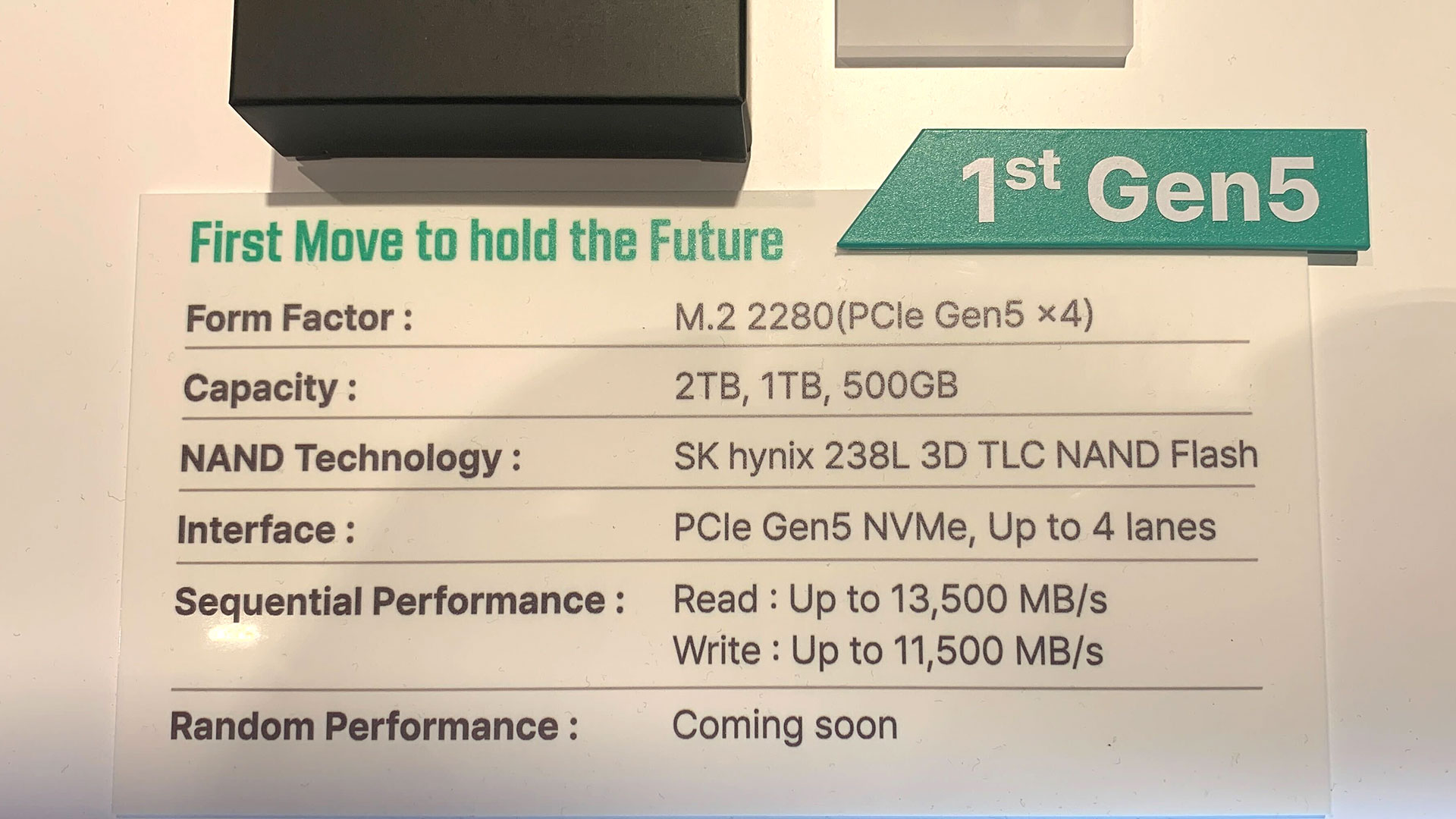The fastest of thebest SSDsnow use PCIe 5.0 connectivity, boasting transfer rates of up to 14 GB/s. But to date, all the consumer models we’ve tested have the same core hardware: aPhison E26 controllerand 236-layer Micron TLC NAND. This same combination powers theCrucial T705, which sports the fastest 14 GT/s NAND and the updatedMax14um Phison firmware. But Phison’s time as the sole purveyor of consumer PCIe 5.0 SSD hardware will be coming to an end later this year, as SK hynix will be launching its own PCIe 5.0 controller and NAND — and we should also finally see the Silicon Motion (SMI) PCIe 5.0 controller in other drives.SK hynix has its upcoming Platinum P51 SSD on display at its GTC 2024 booth, alongside its existing SSDs, and we were told sales should begin later this year. Of course, we’ve been hearing the same thing about SMI’s 5.0 controller and drives for a couple of years now, but SK hynix has the advantage of being the creator of both the controller and the NAND that will go into its drive. Presumably, that should give it an advantage over most other PCIe 5.0 M.2 solutions.
The controller is called Alistar, and it will be paired with SK hynix’s latest 238-layer TLC NAND operating at up to 14 GT/s (final specs TBD). That would match the same maximum speed on Micron’s competing 236-layer TLC NAND, though we don’t have full details on power requirements for SK hynix’s solution yet. It will need to fit within the same ~11.55W average power constraints as any other M.2 drive, of course, and that appears to have been the primary cause of delays with some of the PCIe 5.0 solutions.Raw specs for the Platinum P51 include read/write speeds of up to 13.5 GB/s and 11.5 GB/s, which is just a bit slower than the fastest Phison E26 ‘Max14um’ solution that powers the Crucial T705 — it’s rated at 14.5/12.7 GB/s. But there’s more to an SSD than just pure sequential throughput. Unfortunately, SK hynix didn’t have 4K read/write random IOPS available yet, as the firmware is still undergoing tuning.We’ll need to see how the drives match up across our extensive SSD benchmark suite to truly determine which ends up being better. One of the weak links on the Phison E26 drives has been their high idle power draw of around 2.7W — most PCIe 4.0 SSDs idle at closer to 500~700 mW. That makes the E26 a poor choice for laptops right now, though Phison has its next-generation ‘mainstream’ E31T controller coming to address those needs. The SK hynix Platinum P51 will be a performance-focused drive as well, but we were told the company hopes to get idle power down to similar levels as existing PCIe 4.0 drives — 700mW or lower, give or takeSK hynix hasn’t committed to a firm launch date for the Platinum P51, though it does hope to have the drive out by Q4. With SSD prices on the rise, there are no details on cost either. Hopefully, having a second option to the E26 drives will provide more competition and bring PCIe 5.0 SSD pricing closer to what we’re seeing from PCIe 4.0 drives. We’ll find out more once the P51 gets closer to shipping.

Get Tom’s Hardware’s best news and in-depth reviews, straight to your inbox.
Jarred Walton is a senior editor at Tom’s Hardware focusing on everything GPU. He has been working as a tech journalist since 2004, writing for AnandTech, Maximum PC, and PC Gamer. From the first S3 Virge ‘3D decelerators’ to today’s GPUs, Jarred keeps up with all the latest graphics trends and is the one to ask about game performance.




